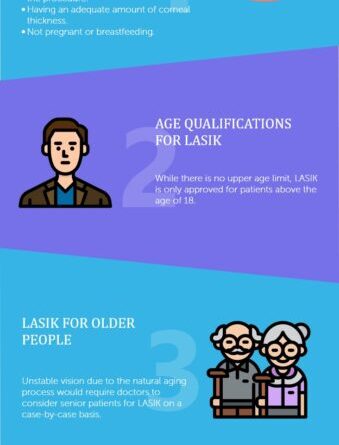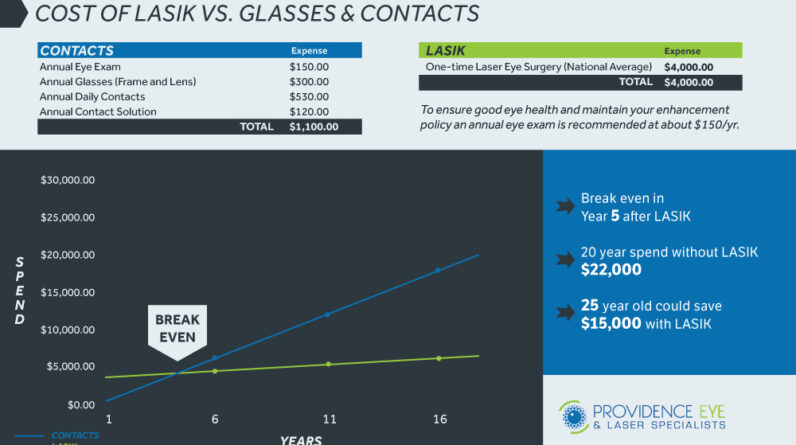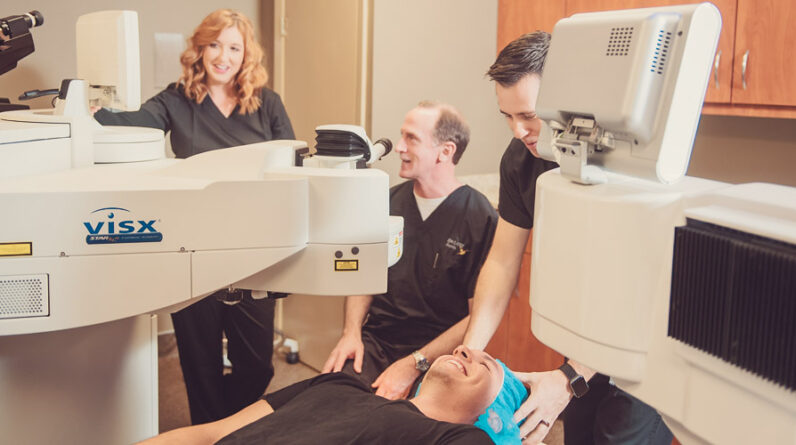Lasik eye surgery is a popular option for correcting vision, but many people are unsure about what to expect during the recovery process. In this article, you will gain a better understanding of the Lasik eye surgery recovery time and what you can anticipate after the procedure. From the initial few hours to the weeks that follow, we will explore the typical timeline and provide helpful tips to ensure a smooth recovery. So, sit back, relax, and let’s dive into the world of Lasik eye surgery recovery!

Understanding the LASIK Eye Surgery Recovery Time
LASIK eye surgery is a popular procedure that has helped millions of people achieve clearer vision without the need for glasses or contact lenses. If you’re considering LASIK, it’s important to understand the recovery time associated with the procedure. This will help you plan accordingly and ensure a smooth healing process. In this article, we’ll explore what LASIK eye surgery entails, the importance of understanding recovery time, factors that can affect recovery, the various stages of recovery, and provide some helpful tips to ensure a successful healing process.
What is LASIK Eye Surgery?
LASIK, short for Laser-Assisted In Situ Keratomileusis, is a surgical procedure that reshapes the cornea to correct refractive errors such as nearsightedness, farsightedness, and astigmatism. The cornea is the clear, dome-shaped surface at the front of the eye, and reshaping it allows light to properly focus on the retina, resulting in clearer vision. LASIK is a safe and effective procedure that usually only takes about 15 minutes per eye.

Importance of Understanding Recovery Time
Understanding the recovery time associated with LASIK eye surgery is crucial for several reasons. First and foremost, it gives you a realistic expectation of the healing process. Recovery time can vary from person to person, so having a general idea of what to expect can help reduce any anxiety or stress. Additionally, understanding the recovery time will allow you to plan ahead and make necessary arrangements for your daily activities while you heal. Finally, being aware of the recovery time can help you avoid potential complications by following the proper post-operative care instructions.
Factors Affecting Recovery Time
The recovery time after LASIK eye surgery can vary depending on several factors. Understanding these factors can give you a better understanding of why your recovery time may differ from someone else’s. Here are some of the key factors that can influence the length of your recovery:
Individual Healing Process
Everyone’s body heals at a different rate, and the same applies to your eyes after LASIK surgery. Some individuals may experience a faster healing process, while others may take a bit longer. It’s important to remember that healing is a natural process, and it may take some time for your eyes to fully adjust to their new shape.
Initial Vision Condition
The severity of your refractive error prior to LASIK surgery can impact your recovery time. Individuals with higher degrees of nearsightedness, farsightedness, or astigmatism may require more time to heal compared to those with milder prescriptions.
Corneal Thickness
The thickness of your cornea is an important factor in determining your eligibility for LASIK surgery. Thicker corneas generally have a quicker recovery time compared to thinner ones. This is because there is more tissue available to reshape during the procedure.
Level of Correction
The amount of correction needed to achieve your desired visual outcome can affect the recovery time. More extensive corrections may require a longer healing period for the eyes to adapt to the new shape of the cornea.
Patient Age
Age can play a role in the recovery time after LASIK surgery. Younger patients tend to have a faster healing process compared to older individuals. However, it’s important to note that LASIK can be safely performed on patients of various age groups.
Presence of Other Eye Conditions
If you have any pre-existing eye conditions, such as dry eye syndrome or glaucoma, it may impact your recovery time after LASIK surgery. These conditions may require additional treatment or follow-up care, which can extend the overall recovery process.
Surgeon’s Techniques
The techniques used by your surgeon during the LASIK procedure can also influence the recovery time. Advanced technologies and surgical techniques can enhance the precision and effectiveness of the surgery, potentially leading to a shorter recovery period.
Post-Operative Care
Following your surgeon’s post-operative care instructions is crucial for a smooth and successful recovery. Properly caring for your eyes, using prescribed medications, and attending follow-up appointments will contribute to a quicker healing process.

Stages of LASIK Eye Surgery Recovery
The recovery process after LASIK surgery can be broken down into different stages, each with its own set of characteristics and considerations. Understanding these stages can help you navigate your recovery period more effectively. Let’s explore each stage in detail:
Immediate Recovery Period
Immediately following the LASIK procedure, you will be given specific post-operative instructions to promote proper healing. These instructions typically include avoiding rubbing your eyes, using prescribed eye drops, and attending follow-up appointments. During this period, you may experience some discomfort, blurred or hazy vision, and sensitivity to light. These symptoms are normal and will gradually improve within the first few days.
First Few Days
During the first few days after LASIK surgery, you may continue to experience some discomfort, but it should gradually subside. Dry eyes are also common during this stage, so you may be prescribed artificial tears or lubricating eye drops to keep your eyes moisturized. It’s important to avoid strenuous activities, as well as any activities that could potentially irritate your eyes. Additionally, wearing protective eyewear, such as sunglasses, can help shield your eyes from bright sunlight.
First Week
As the first week of recovery progresses, your discomfort should continue to decrease, and your vision may improve. While you may not have perfect vision immediately, it should gradually become clearer over time. You can gradually resume your normal activities, but it’s important to maintain good hygiene by avoiding contact with any potential irritants. It’s also crucial to continue using any prescribed medications and attending follow-up appointments.
First Month
By the end of the first month, your corneas should be mostly healed, and you may experience significantly clearer vision. However, it’s important to note that some individuals may experience slight fluctuations in their vision during this period. These fluctuations are usually temporary and should resolve on their own. Follow-up examinations will be conducted to assess your progress, and a final vision evaluation will determine the success of the procedure. It’s essential to report any unusual symptoms or concerns to your surgeon during this time.
Long-Term Recovery
After the first month, you will enter the long-term recovery phase. This phase primarily involves maintaining your regular eye care routine and attending periodic check-ups with your eye care professional. With proper care and follow-up, the vision improvements achieved through LASIK are typically permanent.
Tips for a Smooth Recovery
To ensure a smooth and successful recovery after LASIK surgery, here are some helpful tips to keep in mind:
-
Follow the surgeon’s instructions: Your surgeon will provide detailed post-operative instructions. Adhering to these instructions is crucial for the smooth healing of your eyes.
-
Use eye drops as prescribed: Eye drops are typically prescribed to prevent dryness and reduce the risk of infection. Use them as directed by your surgeon.
-
Avoid touching or rubbing eyes: Touching or rubbing your eyes can increase the risk of infection. It’s important to resist the temptation, even if you experience some discomfort.
-
Protect eyes from UV exposure: Wear sunglasses with UV protection to shield your eyes from harmful ultraviolet rays, especially during the first few weeks after surgery.
-
Avoid contact sports and swimming: For a certain period of time, it’s advisable to avoid activities that may put your eyes at risk of injury or introduce potential contaminants.
-
Maintain good hygiene: Keep your hands clean and avoid introducing any irritants to your eyes during the recovery period.
-
Be patient and give time for healing: Remember that everyone’s healing process is unique. Be patient with your recovery and allow your eyes the time they need to adjust and heal.
-
Keep follow-up appointments: Regular follow-up appointments are essential to monitor your progress and ensure your eyes are healing properly. Attend all scheduled appointments.
-
Report any unusual symptoms: If you experience any persistent or concerning symptoms, such as severe pain, vision loss, or excessive redness, contact your surgeon immediately.
-
Ask questions and seek support: If you have any doubts or concerns during your recovery, don’t hesitate to reach out to your surgeon or support network. Seeking guidance and reassurance can help alleviate any anxiety or uncertainty.
Understanding the LASIK eye surgery recovery time is essential for a successful outcome. By arming yourself with knowledge about the procedure, factors that can impact recovery, and the different stages of recovery, you can have a smoother healing process. Remember to follow your surgeon’s instructions, take proper care of your eyes, and be patient as your vision gradually improves. Soon, you’ll be enjoying the benefits of clearer vision and greater freedom from glasses or contact lenses.







